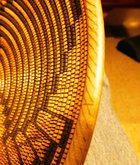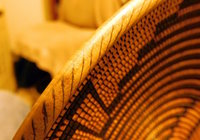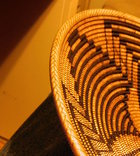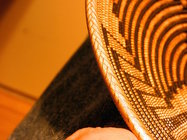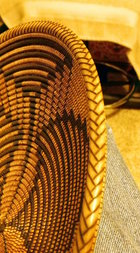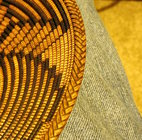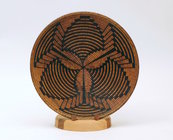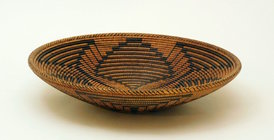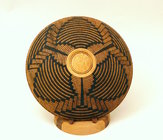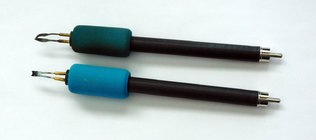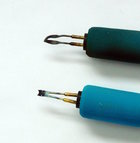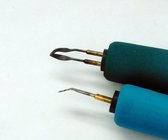Alright, I have the bottom colored and burned. Only a few steps left (but watch your step, they're big ones).
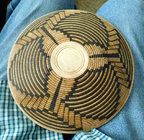
Next I'll do the braided rim. There are several great ways to do the rim, both in authentic Native American baskets and in these basket illusions. And some basket illusionists even leave the rim natural wood or just colored a solid color. They all look good but as I've said a few times in this follow along project I want to try for something that looks authentic. So I'll be doing a braided design. It's not terribly difficult but it is pretty tedious. I do mine in steps or more like laps around the rim. I draw it freehand and there will be distinct inconsistencies in it just because I'm not very good at drawing. But if you look at real baskets those inconsistencies are there too, partly because they're hand made and because of the inconsistency of the material they worked with. So I prefer doing them freehand.
More to come...

Next I'll do the braided rim. There are several great ways to do the rim, both in authentic Native American baskets and in these basket illusions. And some basket illusionists even leave the rim natural wood or just colored a solid color. They all look good but as I've said a few times in this follow along project I want to try for something that looks authentic. So I'll be doing a braided design. It's not terribly difficult but it is pretty tedious. I do mine in steps or more like laps around the rim. I draw it freehand and there will be distinct inconsistencies in it just because I'm not very good at drawing. But if you look at real baskets those inconsistencies are there too, partly because they're hand made and because of the inconsistency of the material they worked with. So I prefer doing them freehand.
More to come...
Last edited:

